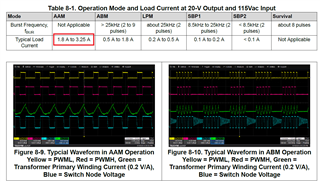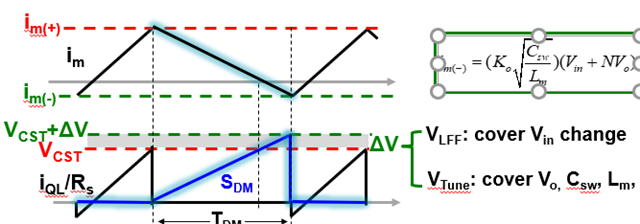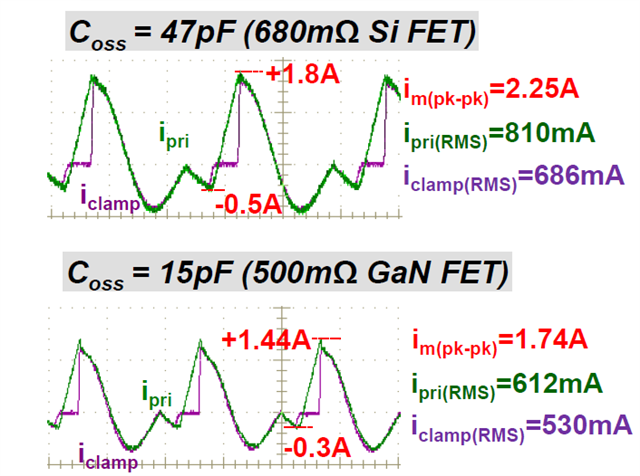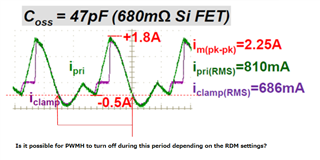Other Parts Discussed in Thread: UCC28782
Hello,
I would like to ask you a question about UCC28782EVM-030.
Regarding the measurement conditions in Figure 8-9 on page 16 of this document, the Load Current is described as "1.8A to 3.25A".
How many amps was the waveform in this figure actually measured at?
Also, are the conditions for other waveforms, including this waveform, as shown below? (Figure 8-9 to Figure 8-14)
Input:115VAC
Output:20V
The background of the question is below.
I am developing a power supply with an output power of 60W, but currently the efficiency is not very good.
It seems that the MOSFET for the active clamp has a large loss (it actually generates a lot of heat), and I believe that more current is flowing to the Hi side than necessary.
I think the on time of the Hi side switch is probably longer than it should be.
I also assume that the switching frequency is lower than it should be, and unnecessary current is flowing through the primary side.
If the waveform in Figure 8-9 of the EVM data is a 60W output waveform, I think the primary side current can be compared between the circuit I'm considering and EVM.
Best regards,








